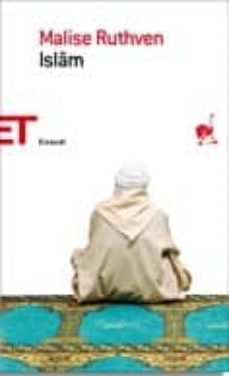Imprescindibles
Ficción
No Ficción
Ciencias y tecnología Biología Ciencias Ciencias naturales Divulgación científica Informática Ingeniería Matemáticas Medicina Salud y dietas Filología Biblioteconomía Estudios filológicos Estudios lingüísticos Estudios literarios Historia y crítica de la Literatura
Humanidades Autoayuda y espiritualidad Ciencias humanas Derecho Economía y Empresa Psicología y Pedagogía Filosofía Sociología Historia Arqueología Biografías Historia de España Historia Universal Historia por países
Infantil
Juvenil
#Jóvenes lectores Narrativa juvenil Clásicos adaptados Libros Wattpad Libros Booktok Libros de influencers Libros de Youtubers Libros Spicy Juveniles Libros LGTBIQ+ Temas sociales Libros ciencia ficción Libros de acción y aventura Cómic y manga juvenil Cómic juvenil Manga Shonen Manga Shojo Autores destacados Jennifer L. Armentrout Eloy Moreno Nerea Llanes Hannah Nicole Maehrer
Libros de fantasía Cozy Fantasy Dark academia Hadas y Fae Romantasy Royal Fantasy Urban Fantasy Vampiros y hombres lobo Otros Misterio y terror Cozy mistery Policiaca Spooky Terror Thriller y suspense Otros
Libros románticos y de amor Dark Romance Clean Romance Cowboy Romance Mafia y amor Romance dramatico Romcom libros Sport Romance Otros Clichés Enemies to Lovers Friends to Lovers Hermanastros Slow Burn Fake Dating Triángulo amoroso
Cómic y manga
Novela gráfica Novela gráfica americana Novela gráfica europea Novela gráfica de otros países Personajes, series y sagas Series y sagas Star Wars Superhéroes Cómics DC Cómics Marvel Cómics otros superhéroes Cómics Valiant
eBooks
Literatura Contemporánea Narrativa fantástica Novela de ciencia ficción Novela de terror Novela histórica Novela negra Novela romántica y erótica Juvenil Más de 13 años Más de 15 años Infantil eBooks infantiles
Humanidades Autoayuda y espiritualidad Ciencias humanas Economía y Empresa Psicología y Pedagogía Filosofía Historia Historia de España Historia Universal Arte Cine Música Historia del arte
Ciencia y tecnología Ciencias naturales Divulgación científica Medicina Salud y dietas Filología Estudios lingüísticos Estudios literarios Historia y crítica de la Literatura Estilo de vida Cocina Guías de viaje Ocio y deportes
MALISE RUTHVEN
Recibe novedades de MALISE RUTHVEN directamente en tu email
Filtros
Del 1 al 7 de 7
GRANTA BOOKS 9781862075733
The terrorist attacks on New York and Washington were carried out by men steeped in a certain Islamic ideology, which has come to be called Islamism. In A Fury for God, Malise Ruthven first reconstructs the events of September 11 and the war in Afghanistan. He traces the role of the idea of jihad and examines the permissibility of suicide in Islam. He reconstructs the world view of Islamist intellectuals like Sayyid Qutb, the Egyptian thinker who has influenced an entire generation of radicals in the Arab world, notably Osama bin Laden. Ruthven highlights their obsessive attention to sexual matters. He also shows that it would be a mistake to treat these people as medieval fanatics: their attitude to modernity is dangerous and ambivalent. And in a changing analysis, the author exposes the crucial importance of the Saudi connection, the massive sponsorship of fundamentalism by an authoritarian tribal regime that has been tolerated by the international community for the sake of Western economic stability. Ruthven's identification of the ambiguities in Western policy is powerfully provocative.
Ver más
Tapa blanda
OXFORD UNIVERSITY PRESS 9780198609971
There is without question immense general and academic interest in the Islamic world at present. After the attacks on New York and Washington in September 2001 and the wars on Afghanistan and Iraq, 'Islamic Fundamentalism' has come to be seen by many people in the West as the primary threat to world peace. Although not all scholars would agree that we are heading for a 'Clash on Civilizations' between Islam and the West, few would dispute that Islamic and Western cultures have evolved very differently. It is impossible to have a real understanding of current Islam without first understanding the historical perspective. Malise Ruthven, author of many acclaimed works on Islam and the Islamic world, including Fundamentalism , A Fury of God: The Islamist Attack on America , and Islam: A Very Short Introduction , and a regular commentator in the print and broadcast media, is ideally placed to provide this perspective. Thoroughly researched and very well written, the Historical Atlas of the Islamic World is concise, accessible, and authoritative. It spans the period from pre-Islamic late antiquity to the present day, incorporating recent patterns of emigration from Muslim-majority countries and the independence of the post-Soviet Muslim states of Central Asia. The maps use the latest design techniques to indicate the shifting nature of frontiers and population densities. In addition to historical maps of the changing internal and external boundaries of the Islamic World, there are maps showing the principle trade routes through which ideas and customs as well as goods were spread. Other maps and charts trace the rise and fall of Islamic dynasties and religious sects, the structure of cities, the distribution of minerals and water resources, agricultural patterns, and archaeological sites. The maps are accompanied by short essays on a wide range of themes, among them: all the countries and regions with Muslim majorities; institutions such as Shari'a (divine law) and fiqh (jurisprudence); philosophy; architecture; costume; the Muslim city; trade, commerce and manufacturing; the decorative arts; marriage and family life; tribal distributions; kinship, and dynastic power; mosque architecture, ritual, and devotional practices; Sufism; modernist and reformist trends; European domination of the Islamic world; Islamic political movments; and oil.
Ver más
Tapa dura
GRANTA BOOKS 9781862075405
Tapa blanda
OXFORD UNIVERSITY PRESS 9780192853899
Tapa blanda
Del 1 al 7 de 7



























